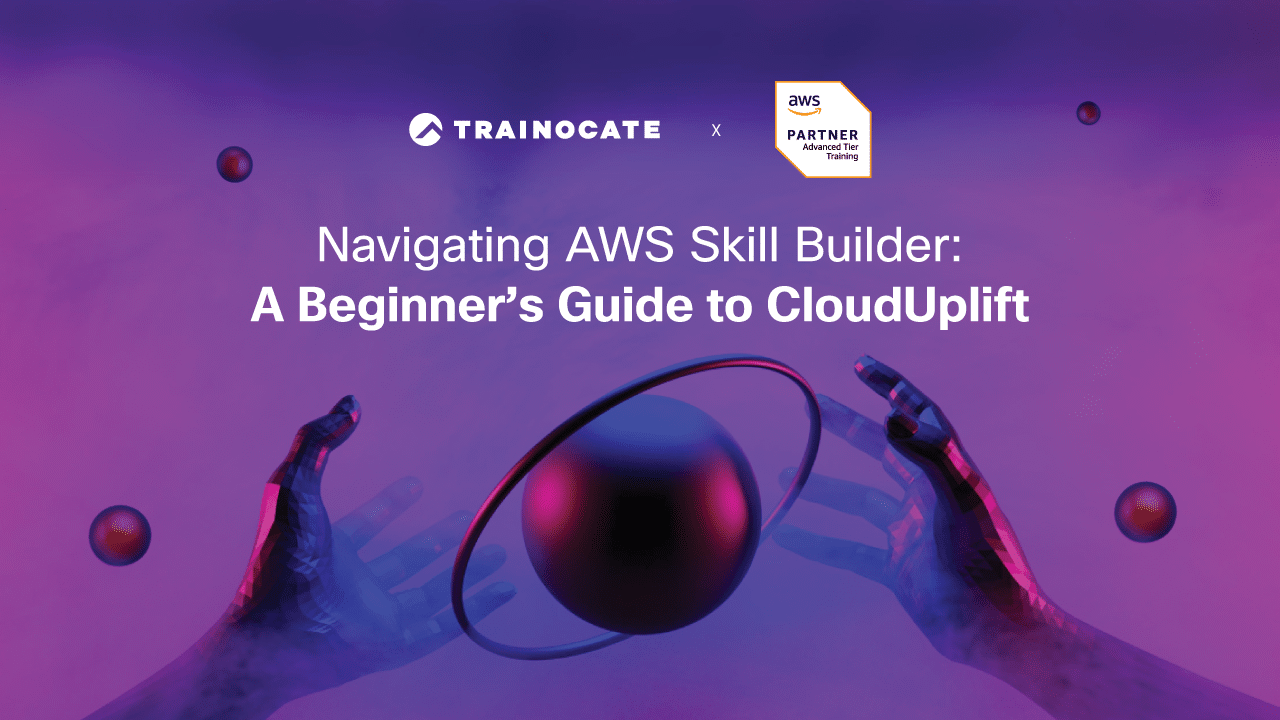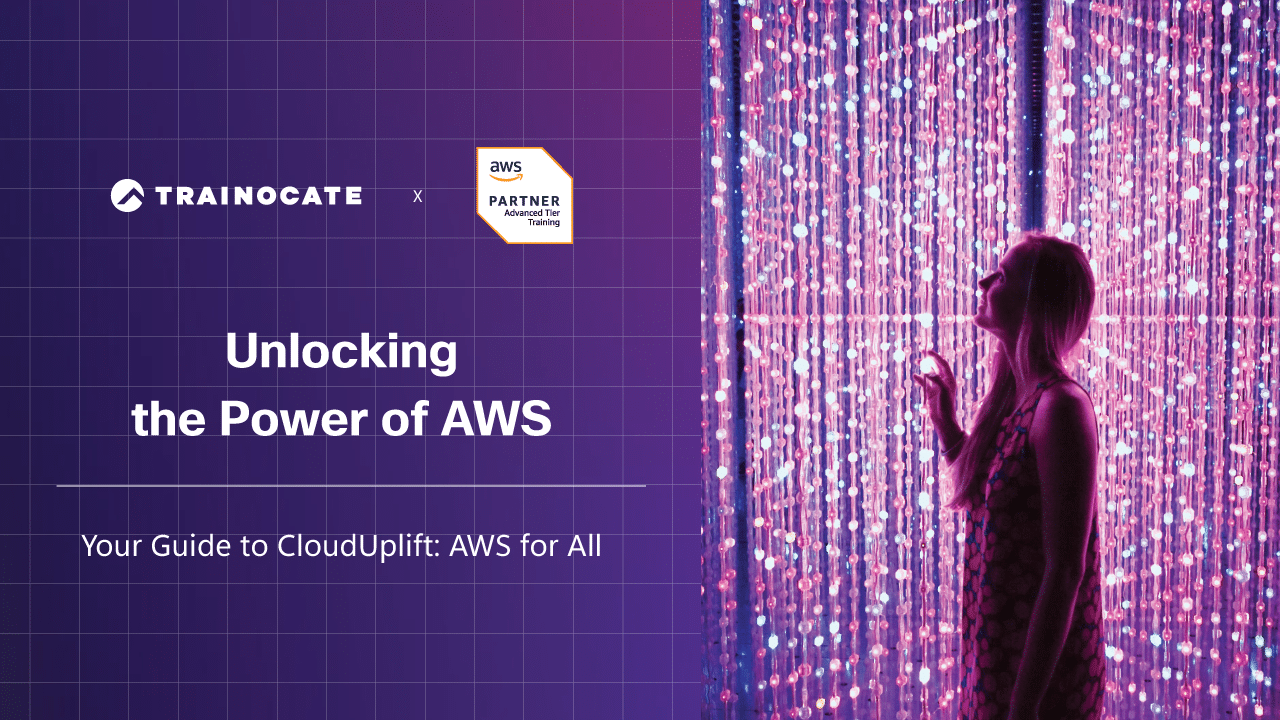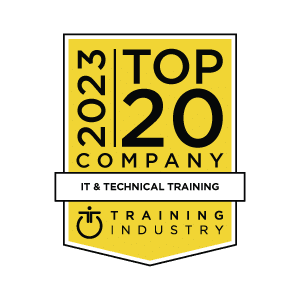Top 10 Cloud Trends in 2024 You Should Know
Top 10 Cloud Trends in 2024 You Should Know

The Shift of Cloud in 2024
In the dynamic world of cloud computing, 2024 heralds ground-breaking cloud trends that will shape our technological future.
Top amongst these are ‘10 cloud trends in 2024 you should know’, spanning quantum leaps in computing to algorithmic advances in AI. Each trend is not just a change; it’s an invitation to reimagine our interaction with the digital universe. Ready to explore these trends?
Dive in for insights that could pivot your understanding of today’s cloud capabilities and the top it skills you should possess.
Key Takeaways
- The democratization of app development is advancing with non-programmers creating applications using low-code/no-code cloud-based tools, altering the traditional dynamics of programming and fostering innovation across various industries.
- AI and ML are increasingly integrated into cloud services, transforming them into intelligent platforms with leading companies investing heavily in AIaaS offerings, which facilitate cost-effective, scalable, and adaptable AI capabilities for a broad range of industries.
- Cloud security is critically focused on data encryption, privacy measures, and compliance, underscoring providers’ commitment to protecting data with advanced security features and promoting trust among users who store sensitive information in the cloud.

1. The Rise of the Empowered Creator
Today’s cloud is more than a storage and compute powerhouse, it’s an empowerment tool. A significant trend in 2024 is the rise of the empowered creator, characterized by an increase in non-programmers developing applications using cloud-based tools. This trend is indicative of how cloud computing is democratizing the development process, shifting the power from a select few to a broader audience.
Cloud computing paves the way for individuals and businesses, facilitating the creation of complex apps through cloud computing service. With the help of low-code and no-code cloud services, the barrier to entry in the realm of app development is significantly lowered. Now, even those with no programming skills can tap into the power of cloud computing technology, creating and managing cloud deployments with ease. This democratization of development is not only fostering innovation but also enabling businesses to streamline their operations and enhance their efficiency.
Power to the Non-Programmers
The empowerment of non-programmers represents the democratization enabled by cloud computing. With low-code/no-code tools, drag-and-drop interfaces, and natural language tools, cloud platforms are simplifying the deployment and management of cloud services. Now, non-programmers can create complex apps using cloud computing services, democratizing the application development process.
Tools like Microsoft’s Power Platform, for instance, have made it possible for non-programmers to create and manage connected systems, becoming one of the most significant trends in cloud computing.
Democratization of Development
The democratization of development in cloud computing stems from making software development accessible to a broader audience. With low-code/no-code development platforms, cloud technology allows both individuals and organizations to leverage its capabilities for software development. These platforms offer visual software development environments that allow users to drag and drop application components, interconnect them, and generate operational applications.
This has opened up a world of opportunities for individuals without programming experience, fostering innovation and facilitating cloud adoption.
Recommended Low-Code/No-Code Courses
Discover low-code/no-code tools with our certified trainer in our Microsoft Power Platform campaign. Save up to RM1,000+ and start your certification journey today! Learn more about Microsoft Power Platform certifications in our detailed guide to power platform certifications.

2. AI and Machine Learning Integration
Artificial Intelligence (AI) and Machine Learning (ML) have moved from futuristic concepts to reality. They are deeply entrenched in the fabric of cloud computing, driving its evolution and shaping its future. Companies like AWS and Google are leading the charge, making substantial investments in AI and ML technologies for cloud computing. The integration of AI and ML into cloud services is not just a trend; it’s a revolution that’s paving the way for intelligent and autonomous cloud computing.
Far from being mere buzzwords, AI and ML are transformative technologies. They are transforming the way we interact with cloud services, making them smarter, more efficient, and more intuitive. For instance, AWS’s DeepLens camera leverages machine learning technology to provide deep learning capabilities to developers, while Google Lens uses machine learning for visual recognition. These instances underscore the potential of AI and ML in enhancing the capabilities of cloud services.
Not only are industry giants like IBM and Google investing in AI and ML, but they are also making them a cornerstone of their strategies. While IBM is placing emphasis on AI and machine learning-related initiatives, Google views machine learning as significant within its AI roadmap. This underscores the commitment of cloud providers towards integrating AI and ML into their offerings, promising a future where cloud computing is synonymous with intelligent computing.
Building Machine Learning Technology
Integrating machine learning into cloud services involves several steps, such as:
- Data collection and preparation
- Training
- Evaluation
- Ongoing iteration
The process requires substantial data, storage space, and time. However, the benefits outweigh the challenges.
Incorporating machine learning into cloud services offers the following advantages:
- Making intelligent capabilities accessible without the need for advanced skills in AI or data science
- Rendering machine learning more accessible, adaptable, and cost-efficient
- Providing flexibility to work with ML models and functionalities without the need for on-demand data science experts.
AI as a Service Offerings
AI as a Service (AIaaS) offerings are democratizing the access to AI tools, making them accessible to businesses without the need for extensive compute resources. Companies leading the way in providing AIaaS offerings include:
- DataRobot
- Salesforce
- Alibaba Cloud
- Microsoft Azure
- AWS
These services are being utilized across various industries such as technology, finance, healthcare, manufacturing, and insurance, underlining the widespread adoption and significance of AIaaS in today’s cloud landscape.
The benefits of AIaaS include:
- Access to AI tools
- Cost-effectiveness
- Faster implementation
- Effective communication
- Scalability
- Reliability
- Security
- Ease of integration
These benefits make AIaaS a cornerstone in the evolution of cloud services.
Recommended AI Courses
Our latest Microsoft AI Mastery Program offers a unique chance to explore the world of artificial intelligence (AI) through 10 comprehensive Microsoft certification courses. Tailored for participants in Malaysia, Singapore, Thailand, Indonesia, Vietnam, and the Philippines, this program delivers a strong curriculum, empowering learners with practical skills and extensive knowledge across diverse AI domains.
This is your best opportunity to learn AI from Microsoft and advance your cloud career.

3. Cloud Security Fortification
In an era where data is progressively becoming a valuable asset, the significance of security in the cloud computing landscape is paramount. Cloud security fortification is a key trend, underlining the growing emphasis on data encryption, privacy, and compliance in the cloud. As businesses and individuals entrust their data to the cloud, ensuring its safety is of paramount importance. This is why cloud providers are investing heavily in security features for compliance and integrating disaster recovery strategies to ensure the protection and resilience of customers’ data against disruptions such as cyberattacks or natural disasters.
Data encryption plays a vital role in securing transmission and storage of data in cloud services. Cloud providers are taking measures to ensure privacy, developing technological, regulatory, and legislative solutions to maintain customer trust by fully protecting their data. These efforts in data encryption and privacy are vital to gain and maintain the trust of customers, without which the adoption of cloud services could be severely hindered. The focus on compliance and disaster recovery underscores the commitment of cloud providers to ensure not just the availability but also the safety of customer data.
Data Encryption and Privacy
Data encryption is at the heart of cloud security. It plays a crucial role in maintaining cloud security by safeguarding sensitive and private information, transforming it into a coded form that can only be deciphered using a decryption key. Cloud providers are investing heavily in data encryption, access controls, and disaster recovery solutions to safeguard customer data. By doing so, they are not just protecting the data but also building trust with customers, assuring them that their data is safe in the cloud.
Compliance and Trust
Compliance with regulations and industry standards is not just a legal obligation for cloud providers; it’s a trust-building exercise. By complying with standard regulations and ensuring the safety and confidentiality of sensitive data, cloud providers can uphold customer trust in cloud services. This trust is essential as businesses and individuals are entrusting their valuable data to the cloud.
Hence, ensuring compliance and investing in disaster recovery strategies are not just about meeting legal obligations but also about building and maintaining trust with customers.
Recommended Cloud Security Courses
AZ-500T00: Microsoft Azure Security Technologies is one of the most well-rounded cloud security course in the market. You’ll delve into embedded Azure security services, swiftly identifying and responding to evolving threats. Implement a layered defense strategy across identities, data, hosts, and networks, streamlining security management in hybrid setups. Ultimately, AZ-500 empowers you to protect cloud workloads comprehensively while validating your expertise as an Azure Security Engineer Associate.
Don’t miss our promotion—get almost RM1,000 off, including exam fees! Don’t wait; elevate your cloud security skills and make this your next cloud security certification!
For more cybersecurity trainings, check out our blog here: Boost Your Career with the Best Cybersecurity Certifications (updated for 2024)

4. Hybrid Cloud and Multi-Cloud Strategies
The cloud does not adhere to a one-size-fits-all approach. Different businesses have different needs, and the cloud needs to cater to these diverse requirements. This is where hybrid cloud and multi-cloud strategies come into play. By distributing workloads across multiple cloud providers and on-premises infrastructure, these strategies offer businesses the flexibility to leverage the unique capabilities of various cloud providers while retaining authority over their data and applications. In essence, they offer the best of both worlds, combining the benefits of cloud computing with the control of on-premises infrastructure.
The adoption of hybrid and multi-cloud strategies is on the rise, with more and more businesses realizing the benefits of these approaches. In fact, it is projected that the percentage of large organizations implementing a multi-cloud strategy will increase from 76% to 85% in 2024. This trend is indicative of the growing recognition of the benefits of these strategies, such as efficient project management, seamless integration of data across platforms, and addressing security concerns effectively.
As we move forward, we can expect hybrid and multi-cloud strategies to become a norm rather than an exception in the cloud computing landscape.
Balancing Flexibility and Security
One of the greatest challenges businesses face when adopting cloud computing is balancing flexibility and security. On one hand, businesses need the flexibility to scale their operations and adapt to changing requirements. On the other hand, they need to ensure the security of their data and applications.
Hybrid and multi-cloud strategies offer hybrid cloud solutions to this challenge. By enabling businesses to:
- distribute their workloads across multiple cloud providers
- leverage the unique capabilities of each provider
- retain control over their data and applications
These strategies offer the flexibility and improved security that businesses need.
Multi-Cloud Management Tools
Managing resources and applications across multiple cloud providers can be a complex task. This is where multi-cloud management tools come into play. These tools enable businesses to efficiently manage their resources and applications across multiple cloud providers, simplifying the process of multi-cloud management. They enhance business efficiency by:
- Facilitating improved interoperability
- Optimizing cloud investments
- Increasing productivity
- Offering centralized control over cloud resources.
In essence, these tools simplify the complexity of multi-cloud management, making it easier for businesses to leverage the benefits of multiple cloud providers and helping developers manage cloud deployments efficiently.
Recommended Cloud Courses:
1. AWS-ARC: Architecting on AWS: This 3-day course empowers you to craft resilient, high-performing, secure, and cost-optimized architectures, as well as earning industry-recognized AWS credentials. Embrace the power of cloud computing through this AWS certification, enhancing your capabilities in hybrid and multi-cloud strategies for a more innovative future.
2. GCPCIN: Google Cloud Fundamentals: Core Infrastructure: Gain expertise in Compute Engine, Google Kubernetes Engine, App Engine, Cloud Storage, Cloud SQL, and BigQuery. Learn to efficiently create and manage resources on the Google Cloud Platform. Hands-on labs provide practical experience with these services.
3. AZ-104T00: Microsoft Azure Administrator: This 4-day course teaches IT Professionals how to manage their Azure subscriptions, secure identities, administer the infrastructure, configure virtual networking, connect Azure and on-premises sites, manage network traffic, implement storage solutions, create and scale virtual machines, implement web apps and containers, back up and share data, and monitor your solution. [RM900+ Discount is Now Available]
5 Fun Facts about Cloud
- Cloud adoption set to increase by 44% in the next 5 years, outpacing on-site computing
- Cloud migration linked to a potential 40% revenue boost for businesses.
- 69% of businesses have established new IT roles focused on cloud technology.
- Expected projection: Over 60% of IT spending to shift to the cloud by 2024.
- 80% of adopting companies witness cost savings and enhanced IT department performance.
Check out the source here.

5. Real-Time Cloud Infrastructure
In a world of unprecedented data generation, the demand for real-time data access is escalating. Real-Time Cloud Infrastructure is designed to meet this demand, offering instant access to data and facilitating real-time processing. This trend is driven by the increasing need for instant access to up-to-the-minute information.
By utilizing real-time insights and streamed data, businesses can become more agile and data-driven, facilitating quick responses to the latest information. Moreover, the role of flash storage in meeting the demand for real-time data access is becoming increasingly important.
Streamed Data and Instant Access
Streamed data and instant access are two key components of Real-Time Cloud Infrastructure. Cloud infrastructure enables real-time data streaming, offering instant access to information. This drives the demand for faster storage solutions, as businesses need to process and analyze data in real time to make informed decisions.
The ability to process data instantly and provide insights in real time is what sets cloud computing apart from traditional computing. This capability is becoming increasingly important as businesses deal with larger volumes of data and require faster data processing capabilities.
Flash Storage Innovations
As the demand for real-time data access grows, so does the need for faster storage solutions. Flash storage is emerging as a key technology to meet this demand. By offering solid-state technology with rapid read-write speeds, high availability, and endurance, flash storage is revolutionizing data storage in the cloud.
It is utilized for:
- Storing heavily accessed database information for real-time dashboards
- Facilitating seamless scalability without service disruption
- Meeting the backup needs of high-performance applications.

6. Sustainability in the Cloud
In an era where sustainability is a central concern, the cloud computing industry is keeping pace. There is a clear transition towards more environmentally friendly and sustainable practices in cloud computing. Green computing initiatives in cloud computing include:
- Server virtualization
- Renewable energy usage
- Energy efficiency advancements
- Efficient data lifecycle management
These initiatives are being integrated into cloud computing to promote sustainability.
Furthermore, eco-friendly cloud services are making a significant contribution to environmental sustainability through:
- the implementation of energy-efficient infrastructure
- utilization of virtualization
- optimization of data centers
- reduction of carbon emissions.
Green Computing Initiatives
Green computing initiatives are a key component of the sustainability trend in cloud computing. These initiatives aim to:
- Reduce energy consumption in computing operations
- Minimize environmental impact
- Optimize server utilization
- Utilize energy-efficient hardware
- Integrate renewable energy sources
Cloud providers are adopting these practices to reduce their energy consumption and environmental footprint.
By doing so, they are not just reducing their operational costs but also contributing to a more sustainable future.
Eco-Friendly Cloud Services
Eco-friendly cloud services are another key component of the sustainability trend in cloud computing. These services aim to minimize the environmental impact of cloud computing operations by implementing energy-efficient infrastructure and sustainable practices. By leveraging these services, businesses can not only reduce their environmental impact but also leverage the benefits of cloud computing in a more sustainable way.
Prominent providers of environmentally sustainable cloud services include Google Cloud Platform (GCP), Amazon Web Services (AWS), and Microsoft Azure, demonstrating the industry’s commitment to sustainability.

7. Serverless Architectures Gain Ground
Serverless architectures are making strides, signifying a significant shift in business’ usage of cloud computing. Serverless computing offers several benefits, including:
- Removing the necessity for businesses to oversee their own servers
- Enabling businesses to pay only for the resources they utilize
- Potential cost reductions
- Streamlined operations
These advantages make serverless computing an attractive option for businesses.
The adoption of serverless architectures has been steadily increasing, particularly among organizations utilizing Azure, Google Cloud, and AWS. This indicates a broader shift in application development and scaling strategies, marking the growth of serverless computing as a key trend in cloud computing.
Pay-As-You-Go Models
Pay-as-you-go models are a key feature of serverless computing, offering businesses the following benefits:
- Flexibility to pay only for the resources they use
- Reduced costs
- Simplified deployment process
- Easier management of cloud deployments
Companies like:
- Amazon Web Services (AWS) Lambda
- Microsoft Azure Functions
- Google Cloud Functions
- IBM Cloud Functions
are leading the way in offering serverless computing services with a pay-as-you-go pricing model, making serverless computing more accessible to businesses of all sizes.
Simplifying Deployment
Serverless architectures simplify the deployment and management of applications, making cloud computing more accessible to businesses. By removing the need to manage servers, serverless architectures enable developers to focus on writing and deploying code, making it easier for businesses to leverage the benefits of cloud computing.
This simplification of the deployment process is a key advantage of serverless architectures, contributing to their growing popularity among businesses.

8. Edge Computing Takes Center Stage
With the ever-growing volume of data from connected devices, the need for efficient data processing is escalating. This is where edge computing comes into play. By moving computation and data storage closer to the devices and sensors that produce it, edge computing minimizes latency and reduces bandwidth requirements, enabling faster and more efficient data processing.
The growing importance of edge computing in efficient data processing and IoT applications is a key trend in cloud computing, driving the evolution of the cloud landscape. As such, it is crucial to stay informed about the latest cloud computing trends.
Efficient Data Processing
Efficient data processing is a key advantage of edge computing. By facilitating instantaneous processing and analysis of data at the network’s edge, edge computing eliminates the need to transmit data to the cloud or a central data center. This reduction in latency enables businesses to make real-time informed decisions, enhancing their operational efficiency.
As the need for real-time data processing continues to grow, edge computing is set to play an increasingly important role in the distributed computing environment, particularly within the cloud computing infrastructure landscape.
Edge and IoT Synergy
The synergy between edge computing and the Internet of Things (IoT) is a key factor driving the growth of edge computing. By enabling real-time analysis of data at the device level, edge computing:
- Reduces the need for data transmission to the cloud
- Enhances data processing efficiency
- Improves the performance of IoT devices, enabling them to respond in real time to changes in their environment.
As the number of IoT devices continues to grow, the synergy between edge computing and IoT is set to play an increasingly important role in the evolution of cloud computing.
Recommended Data Courses
Explore our latest campaign offering 5 Microsoft Data & AI certification paths. These certifications demonstrate your proficiency in Microsoft’s Intelligent Data Platform, showcasing your data skills to current and potential employers. Validate your capability to assist in implementing intelligent cloud and edge strategies for enhanced opportunities in the field.

9. Cloud Gaming Ascends
The gaming industry is also embracing the increasing adoption of cloud services. Cloud gaming, which allows for the remote streaming of games across various devices, is on the rise. This trend is driven by the growing investments by cloud providers in the gaming sector and the increasing market value of cloud gaming.
From niche to mainstream, the cloud gaming market is projected to increase significantly, indicating a promising future for this trend.
From Niche to Mainstream
Cloud gaming is transitioning from a niche market to a mainstream offering, thanks to the investments by major cloud providers. Companies like Microsoft, Amazon, and Google are investing heavily in the cloud gaming sector, recognizing its potential and the opportunities it presents. These investments are not just about gaining a share of the gaming market; they are about driving the evolution of the gaming industry, creating new opportunities for game developers, and enhancing the gaming experience for players.
Innovation in Cloud Gaming
Innovation is at the heart of cloud gaming. With the integration of generative AI, on-demand gaming models, and the growth of e-sports, cloud gaming is not just about playing games on the cloud; it’s about redefining the gaming experience. This innovation is creating new opportunities for developers and gamers, driving the industry forward.
The continuous evolution of virtual reality (VR) and augmented reality (AR), alongside the impactful changes brought by cloud technologies, represent current major trends impacting the field.

10. Embracing Quantum Computing
Quantum computing has transitioned from the realm of science fiction to reality. With the potential to perform complex computations at unprecedented speeds, quantum computing is set to revolutionize the computing landscape. The integration of quantum computing with cloud services is a key trend in cloud computing, opening up new possibilities for computational power and capabilities.
While there are challenges to overcome, such as the short lifespan of qubits and the lack of scalability, the potential benefits of quantum computing make it a trend to watch.
Quantum Computing Potential
Quantum computing holds immense potential. Its ability to handle intricate computations at unprecedented speeds sets it apart from classical computers. By utilizing qubits instead of bits, quantum computers deliver higher computational power and scalability.
This capability, combined with the ability to leverage the phenomenon of superposition, makes quantum computing a game-changer in the computing landscape. While there are challenges to overcome, the potential of quantum computing is undeniable.
Cloud-Based Quantum Services
Cloud-based quantum services are making quantum computing accessible to a wider audience. By offering quantum computing resources via the cloud, these services allow businesses to access and experiment with quantum computing technology without the need for expensive infrastructure.
Companies like IBM Q Experience and Google Quantum AI are leading the way in providing cloud-based quantum services, demonstrating the growing interest in and accessibility of quantum computing.
Summary
In the ever-evolving landscape of cloud computing, the trends of 2024 represent a significant shift in the way businesses and individuals leverage the cloud. From the rise of the empowered creator and the integration of AI and machine learning, to the focus on cloud security and the adoption of hybrid and multi-cloud strategies, these trends are reshaping the cloud landscape. At the same time, the emergence of real-time cloud infrastructure, the focus on sustainability, the rise of serverless architectures, and the growing importance of edge computing are driving the evolution of cloud computing, offering new opportunities and challenges for businesses and individuals alike.
As we look to the future, the emerging trends of cloud gaming and the integration of quantum computing with cloud services offer a glimpse into the potential of cloud computing. These trends represent not just the future of cloud computing, but also the future of technology as a whole. As we continue to leverage the power of the cloud, we can expect to see even more innovation, efficiency, and transformation in the years to come.
To appreciate you for reading until the end, we have a programme where you can access to 5 free Google learning paths — Go Cloud. From Generative AI to Analytics to Cloud, we’ve got you covered! Click on the banner below to enroll today!

Frequently Asked Questions
What are the cloud trends in 2024?
In 2024, there will be an increased focus on cloud security, compliance with regulations, and advancements in cloud technologies such as containers and Kubernetes. The adoption of multi-cloud approaches and the demand for instant access data storage solutions will also rise.
What are the data center trends in 2024?
In 2024, key data center trends include artificial intelligence, edge computing, hyperscale, and other industry-shaping innovations.
What will cloud trends be in 2025?
In 2025, cloud computing is estimated to be an $864 billion market with a compounded growth rate of 12.8% annually. Organizations will adopt hybrid and multi-cloud strategies to utilize the best features from multiple cloud providers.
What are the edge computing trends in 2024?
In 2024, the edge computing ecosystem will focus on implementing robust security measures, including secure communication protocols, encryption techniques, and AI-driven threat detection systems.
What is the significance of the rise of the empowered creator in cloud computing?
The rise of the empowered creator in cloud computing signifies a trend towards a growing number of non-programmers creating applications using cloud-based tools, democratizing the development process and making software development accessible to a wider audience.
How can i keep up with the ever-changing cloud trends?
Staying ahead of evolving cloud trends requires ongoing learning and staying current with the industry. Consider investing in your skills through reputable training providers like Trainocate Malaysia. Their courses offer the latest knowledge and certifications, validating your expertise and significantly boosting your career prospects. Start exploring the available cloud certifications now!





